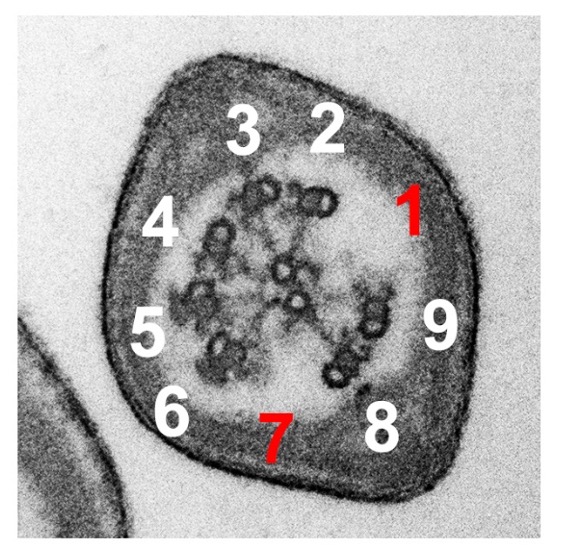Recently, Dr. Qianting Zhang’s group from Zhejiang University-University of Edinburgh Institute (ZJE) and the collaborators published an article entitled “BBOF1 is required for sperm motility and male fertility by stabilizing the flagellar axoneme in mice” in Cellular and Molecular Life Sciences.
Defects of sperm flagella is a direct cause of male infertility, manifested by varying degrees of oligoasthenoteratozoospermia (OAT). A group of these OAT patients are affected by genetic mutations. Although they can still produce biological offsprings relying on intracytoplasmic sperm injection (ICSI), the diseases cannot be improved by conventional clinical treatment and needs to be screened before clinical treatment. Therefore, to clarify and screen the pathogenic mutants involving OAT has scientific and clinical significance for improving the diagnosis and treatment of male infertility and cutting off the transmission of pathogenic genes.
The axonemal outer dynein arm protein MNS1 is closely related to cilia movement. Genetic mutations of Bbof1 in mice and humans cause OAT and primary ciliary dyskinesia (PCD). In this research, we identified BBOF1 as a new MNS1-interacting protein, and it is robustly expressed in mouse testes. Knockout of Bbof1 in mice caused OAT and male sterility. Sperm derived from knockout males exhibited disrupted sperm axonemal ultrastructure and reduced mobility, which phenocopied MNS1 mutant. In this project, we will use gene-modified mouse models to clarify the molecular mechanisms of BBOF1 and its interaction with MNS1 in mammalian sperm flagella assembly and sperm motility. Besides, BBOF1 is found to interact with an outer dense fiber protein, ODF2, and is required for the stabilization of MNS1 and ODF2. BBOF1 is dispensable for the assembly and function of motile cilia in brain and trachea, mainly essential for the structural integrity of the sperm flagellum. In the future, BBOF1 could be identified as a new OAT-related pathogenic gene in clinics, aiming to improve the standard of genetic diagnosis and precision medicine in male infertility.

BBOF1 deletion causes severe defects in axonemal organization, indicated by the absence of certain peripheral MTDs on cross sections of sperm flagella shown in a representative TEM image.
Access to the publication: https://link.springer.com/article/10.1007/s00018-023-04800-0







